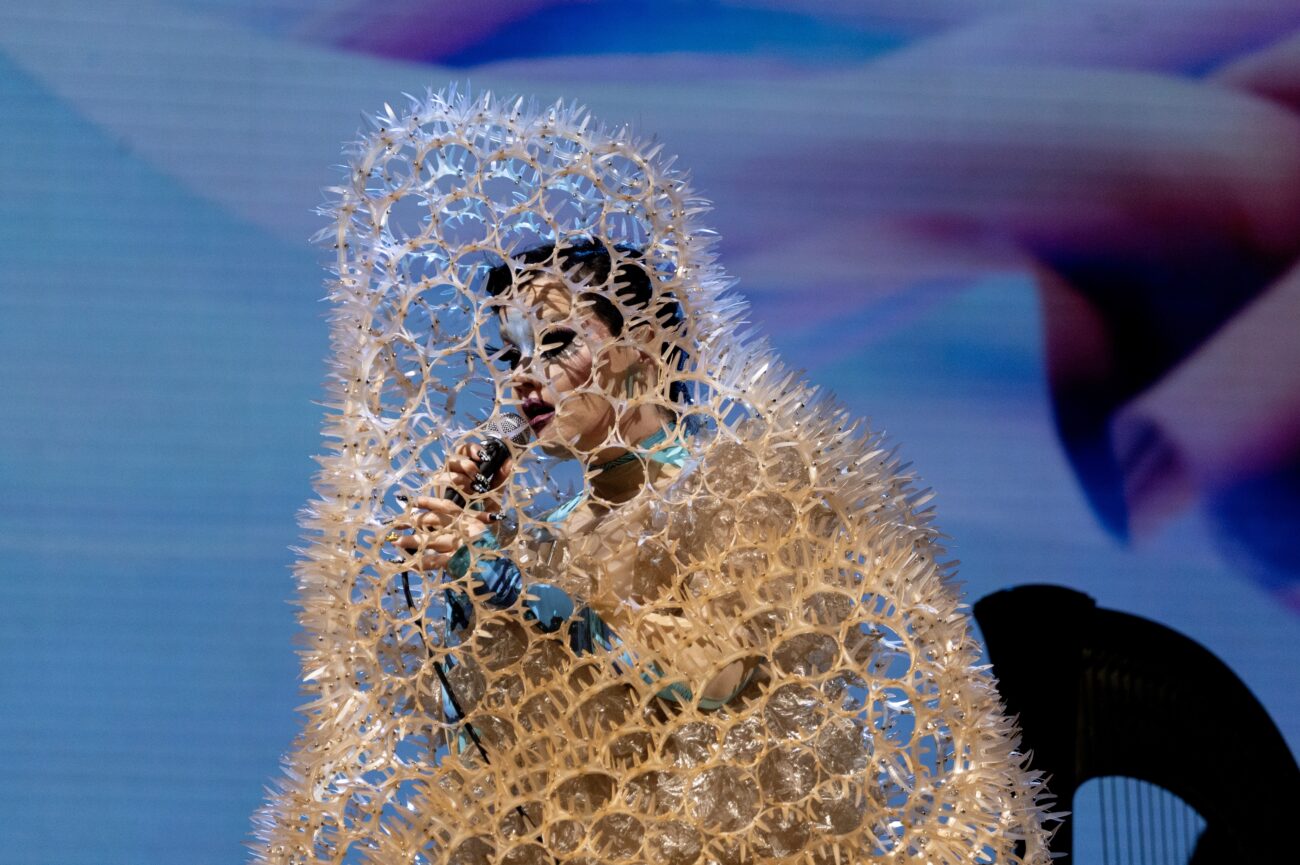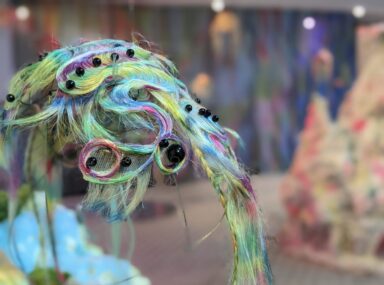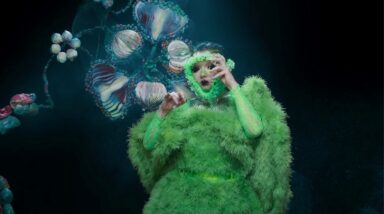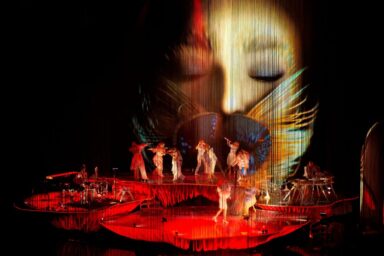Björk is a total artist, a perpetually evolving organism, an entity that fuses technology, art, and consciousness into a fluid, unclassifiable continuum. She is sonic matter and architectural vision, code and flesh, geology and algorithm. Her voice is not merely an extension of the body but a medium that transcends physical and digital barriers — an interface between the tangible and the virtual, the biological and the synthetic. Her compositions are living ecosystems, sonic habitats where nature and artificial intelligence intertwine, generating hyper-real worlds that are simultaneously archaic and futuristic.
DOMENICO COSTANTINI in conversation with BJÖRK
BEING AS METAMORPHOSIS,
ART AS CONCRETE HALLUCINATION
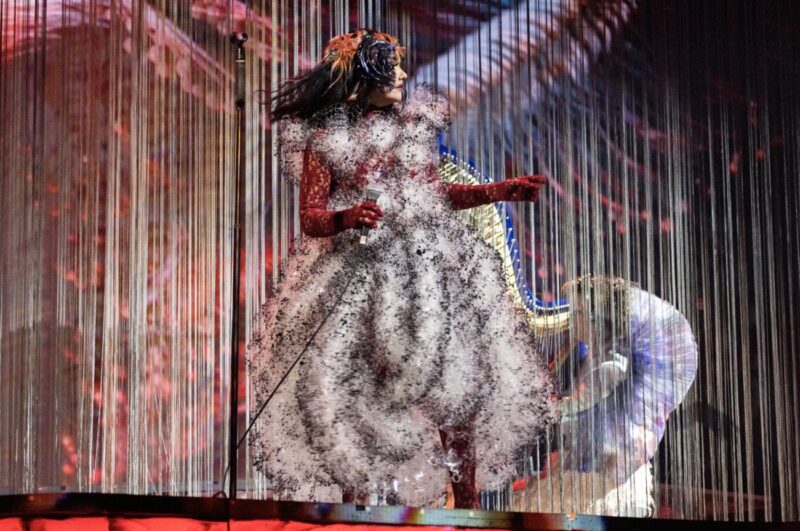
In the Cornucopia manifesto, you assert that we must imagine what does not yet exist, take care of the future with intentionality, and claim a space for hope. How can music simultaneously serve as a means of envisioning a better future and as an act of tangible resistance against environmental and social issues?
Yes, I believe that music is, by its very nature, a highly abstract form. Sound itself is an abstract language, and as such, it is not typically employed in these contexts. More often, theory and language are used to describe revolutions. However, if we listen, for instance, to a symphony or—perhaps more significantly—to a harmony from the past, such as a gramophone recording that transports us a hundred years back, or if we immerse ourselves in a techno track or something contemporary, we see how each of these sonic worlds represents something fundamental. Every musical form embodies a set of musical choices, the available technologies of its time, and the materials from which it is made—whether wood or advanced technology. Even the lyrics, if present, are significant, as music is intrinsically connected to language and the meanings of words, as seen in the operatic works of the 18th century. Jazz from a century ago conveyed a message distinct from that of today’s music. Now, in the 21st century, we experience an entirely different sonic world, with its own language, emotions, and significance. I find this profoundly relevant as we move forward. For me, it is crucial to utilise every tool that music and composition offer me within my contemporary context—whether that be a computer, an iPhone, or my own voice and body as a singer. I believe this is the most sincere way to engage with the world around us. Sometimes, envisioning the future through a song is simpler: many science fiction writers have explored this concept, crafting narratives that depict the future while simultaneously serving as warnings or lessons, encouraging collective reflection on the challenges we face. It seems to me that music can be a powerful means of helping us address difficulties, particularly because, in the wake of complex periods, imagination provides an easier starting point: we first envision how we would like things to be, and from there, we propel ourselves towards that vision. Imagination, therefore, can be the most potent force in helping us emerge from circumstances we do not wish to endure. Yet, it is also a complex instrument, one that can sometimes be challenging to wield. Like all things, it has both a dark and a light side—it is up to us to make a choice.
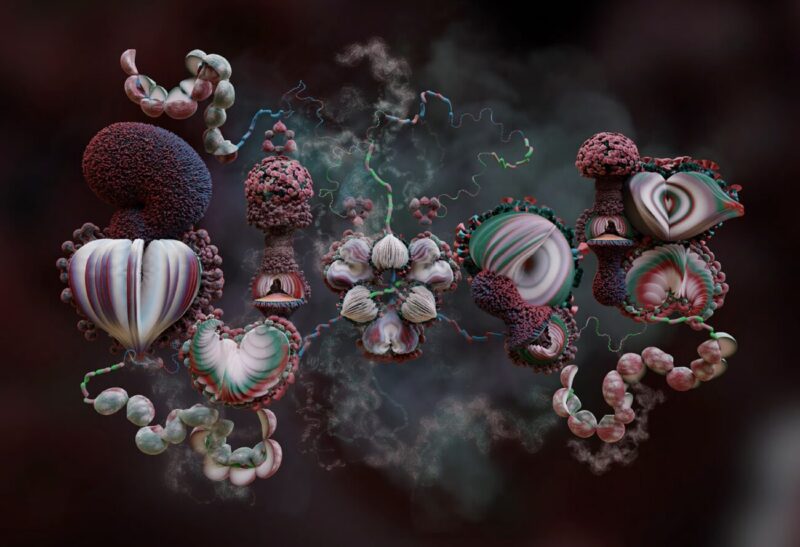
You have described Cornucopia as your most complex project—an immersive experience featuring 27 mobile screens, projections, and a highly sophisticated visual and sonic environment. Could you provide a more detailed description of this 21st-century magic lantern?
For over a decade, I have explored immersive and multidimensional sound environments. With Biophilia first, and later with Vulnicura VR, I collaborated with teams of experts in advanced technologies, experimenting with cutting-edge software. Yet, I realized that within this universe, music had not yet found its ideal space. For instance, when we attempted to mix the sound for Vulnicura VR into an immersive 360-degree headphone experience, we discovered that the necessary software did not yet exist. While video games had developed three-dimensional sound systems, these remained relatively simplistic compared to the complexity of music. Thus, in 2018, I collaborated with a programmer to develop one of the first software programs capable of mixing and mastering immersive music for headphones.
However, after years spent immersed in technology—in headphones, in VR headsets—I felt a profound need to bring all of this back to the stage, to a 19th-century theatre. The core idea behind Cornucopia was precisely this: to take what had been confined to the virtual realm and render it physically tangible, in a theatrical setting that subverted its own conventions. Traditional theatre has a frontal structure: the audience is positioned on one side, the stage on the other. The sound is typically stereo, emanating from two sources. I wanted to dismantle this static arrangement and create a more fluid, enveloping experience—something akin to a digital Times Square or Trafalgar Square, where the audience is surrounded by a mosaic of screens.
We transported visual content onto the stage, crafted using 360-degree animation software such as Unity, and built an immersive environment that dissolved the boundaries between audience and performance. To achieve this, I opted for 27 screens and a series of mobile curtains that continuously opened and closed, generating a visual choreography akin to film editing. The staging incorporated multiple layers: a high-definition LED screen at the back, projections onto translucent veils, mobile structures, and even ‘spaghetti curtains’ that introduced further depth. The aim was to construct a three-dimensional space that transcended the conventional notion of static scenography.
This required extraordinary precision. Every visual element was synchronized with the musical and emotional structure of the songs: the way a curtain opened or closed corresponded to the transitions within a piece, mirroring the effect of cinematic editing. Initially, I lacked a clear vision of the final outcome, but gradually, I understood that Cornucopia was, in essence, a live cinematic experience—where the stage itself became a multidimensional screen, a constantly evolving visual and sonic organism. Of course, this was the result of an immense collaborative effort. Fortunately, I had the privilege of working with an exceptional team who believed in the project from the very beginning. It is thanks to this synergy that everything materialized precisely as I had envisioned.
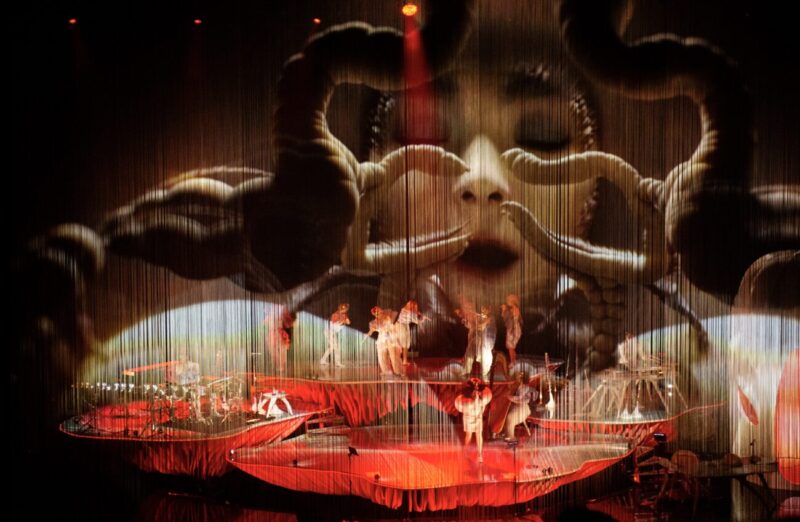
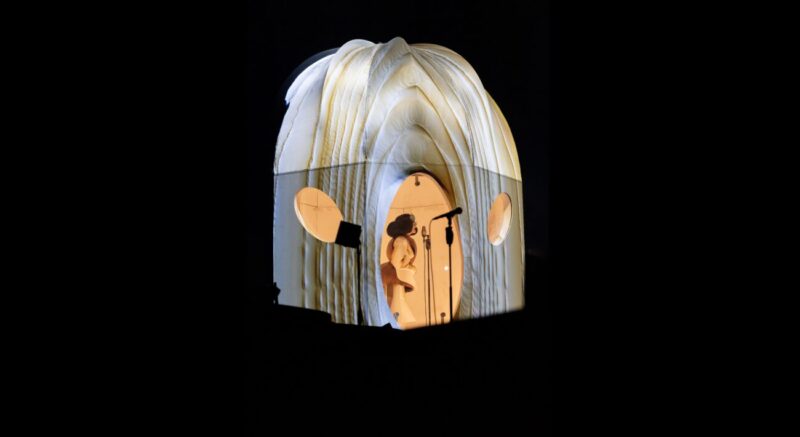
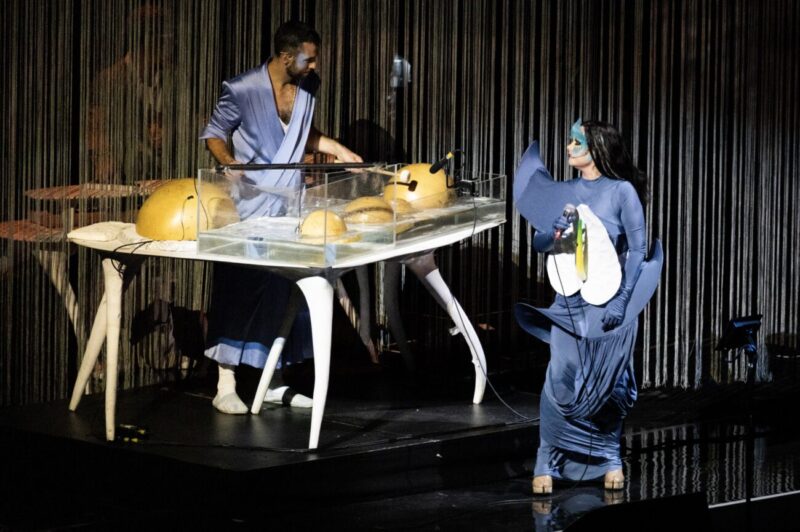
In your work, sound becomes an act of resistance and creation—a collective ritual that transcends mere musical performance. How did the idea arise to transform the flute—an instrument traditionally associated with delicacy and lightness—into a sonic weapon, a tool of power and feminist assertion? And what significance does the closing circle around you hold, with flutes wielded as instruments of a shared battle?
The flute has always held a particular fascination for me. Its delicacy, its ability to produce sounds that are both subtle and powerful, made it the perfect medium for what I wished to express. When conceptualizing Cornucopia, I envisioned a sound that was ethereal, almost spiritual, yet simultaneously forceful and incisive. The flute possesses an almost symbolic dimension: it is an instrument that can be fragile yet extraordinarily potent—much like feminine energy itself.
I sought to explore how gentleness, beauty, and fragility can also serve as acts of resistance. Within the context of Cornucopia, the flute thus becomes a declaration of strength through delicacy. It is not a sign of weakness but rather a force that emanates from within—a defiance against the brutality of the world.
The flautists in Cornucopia are not merely musicians; they are integral to a collective process that encompasses the entire project. I specifically wanted them to be women of different ages and backgrounds, as I believe each woman brings her own vision, her own energy, which enriches the experience. Each flute, each sound they produce, forms part of a whole that can only be complete through their shared participation.
It is an act of solidarity, of collective expression, and of female power. Every flautist played a precise role in creating this sense of interconnectedness and continuous flow. It was a process that required deep mutual trust and collaboration, and the result is something that could not have been realized without each of them.
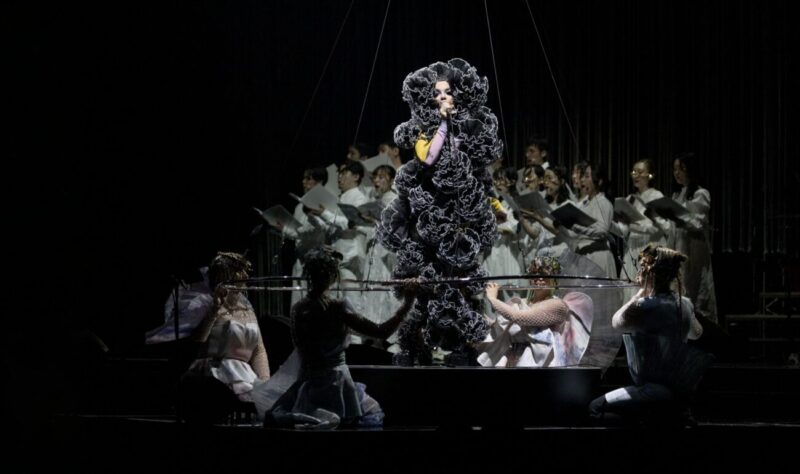
In Cornucopia, masks, costumes, and scenographies are not mere ornaments but instruments of transformation. How do these elements suggest a metamorphosis between artifice and nature, between the human and the post-organic creature?
For me, the relationship between technology and craftsmanship is fundamental. I often say that the word “techno” derives from the Greek word for “craft,” highlighting that technology, for me, is an extension of traditional craftsmanship. Technology and creativity merge in a natural, almost symbiotic way. For instance, when I make music, I use the latest software to create beats, mix tracks, and compose melodies. It has been part of my life ever since I bought my first laptop in 1999. This dialogue between the physical and the technological is constant, just like when I compose a melody during a walk, return home to record it on software, and then collaborate with musicians to bring it to life.
This combination of organic and digital extends beyond music into visual art. In my work with masks and avatars, I collaborate closely with James Merry, who designs masks that merge digital and physical forms. Together, we explore where the physical body meets the mask. For example, in Utopia, we wanted to blend human and vegetal forms, using silicone and 3D printing to create biological, almost mutant-like expressions. We always seek a new interpretation each time, rather than offering a fixed, singular answer. The process is about transformation, and I am fascinated by how technology can simplify the complex or, conversely, make it even more intricate. It is a continuous refinement of the interaction between technology, biology, and creativity, and I love blurring the boundaries between these worlds. It is about allowing nature and technology to coexist in a way that feels both organic and transformative.
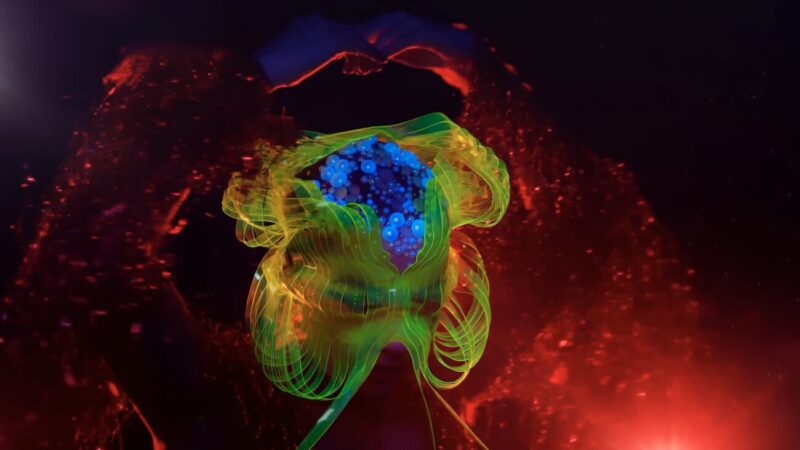
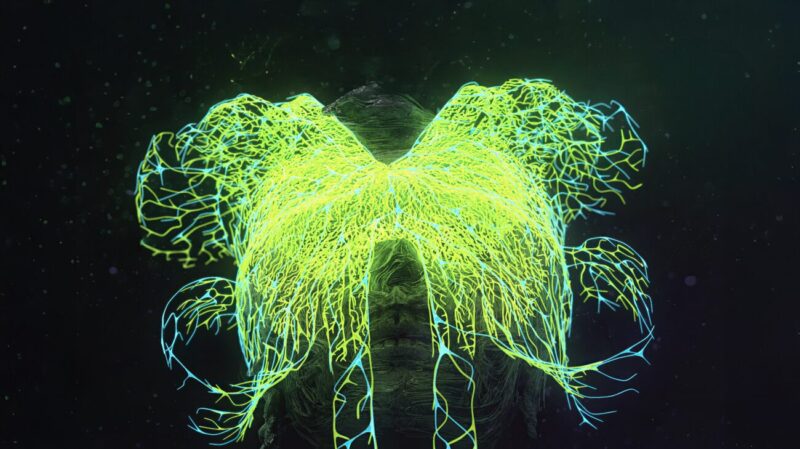
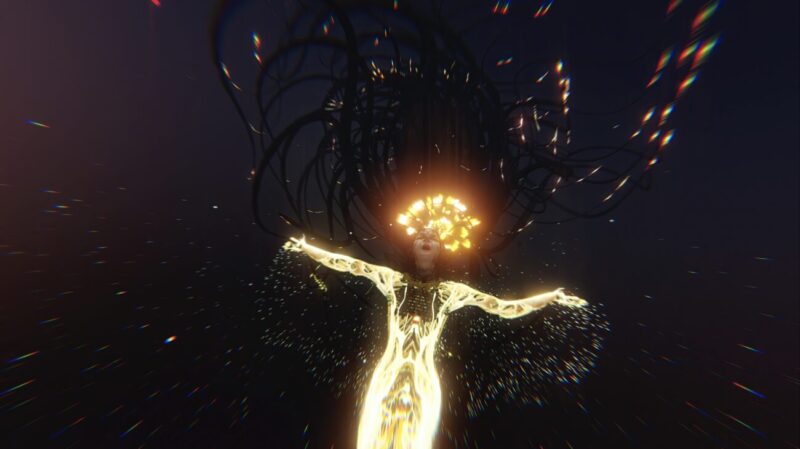
The piece that struck me the most is Náttúra. Listening to it, I feel the primordial power of the earth, the rocks, the water—all the natural elements. In your view, which composition best embodies your relationship with nature? Which do you consider your most representative piece in this regard?
Thank you. Náttúra is a particularly intense, chaotic, almost brutal piece, much like nature itself, at least as we experience it here in Iceland. Here, nature is not a delicate butterfly resting on a flower; it is something wild, powerful, at times ruthless. That piece intended to translate this energy into sound—a celebration of nature in its most authentic and untamed essence. That is why the rhythm is so frantic, almost out of control, yet simultaneously festive. There is no negativity, but rather an exaltation of the primordial force of the elements.
However, for a musician, it is always difficult to pinpoint their most representative work. Personally, once I complete a composition, I tend to forget it because I am already looking ahead to what comes next. I do not listen to music in my daily life, so selecting just one piece is a challenge. Every song is a snapshot of a specific moment, a particular exploration, and I believe the best representation of my connection with nature is always in the process itself, in the continuous evolution of sound and meaning.
In Declare Independence, you chant, “Declare independence, don’t let them do that to you,” a rallying cry that seems directed at those under the grip of global elites, often driven by economic interests that undermine freedom and self-determination. How does this message fit into today’s dynamics, where individuals and economic powers rise as new sovereigns, dictating the rules of a game that increasingly seems detached from collective needs? How do you envision the struggle for independence and resistance evolving in a context where concentrated power threatens to silence the most vulnerable voices?
Declare Independence was originally conceived as an anthem of emancipation for Greenland and the Faroe Islands. Today, in an increasingly complex geopolitical landscape, the song takes on new meanings and is reinterpreted in different contexts. Recently, I discovered that it has been used on TikTok to support Greenland’s independence movement, which made me very happy. Greenland has been at the center of recent scandals that highlight the enduring nature of Danish colonialism. In the 1960s, ’70s, and ’80s, thousands of Greenlandic women were forcibly subjected to contraceptive implants without their consent, preventing them from having children. Given Greenland’s small population, the impact was massive.
Another deeply unsettling issue is the forced removal of children from Greenlandic families by a Danish commission that deemed them unfit parents, placing these children with Danish families—a practice reminiscent of colonial mechanisms of the past.
Shockingly, such events continue to unfold today, and even more so, Denmark refuses to acknowledge the colonial nature of this relationship. Declare Independence was created to denounce these abuses, but its message extends to many contemporary struggles. Freedom is a condition that must be constantly reaffirmed and defended, in every era and every context.
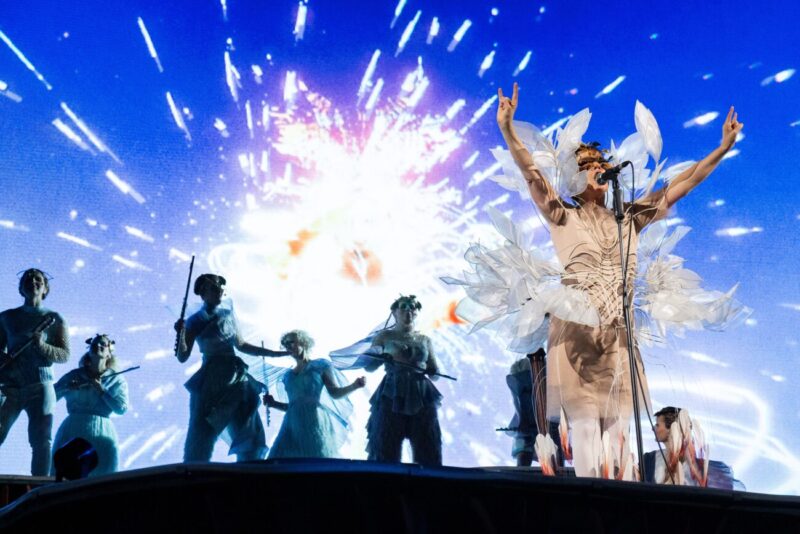
Your DJ sets operate on multiple levels, blending disparate sonic textures with an insatiable curiosity. How do you navigate through different musical regions while recontextualizing traditional folk sounds within a modern, club-oriented framework, preserving the mystery and potency of your musical language?
For me, it was a great surprise to find myself doing so many DJ sets. I have always viewed this practice more as an extension of my activism than as an artistic pursuit in itself. In particular, I see it as a way to support record stores and ensure their survival. When we mix in these spaces, it is always a form of cultural resistance: free entry, open to all, rooted in a tradition I have engaged with since my teenage years.
As kids in the punk scene, we worked in record stores as volunteers, unpaid, just to keep them from shutting down. It was about community, about preserving a gathering space. This tradition continues today, with events we organize, sometimes on the full moon—precious moments of exchange.
My favorite DJ sets are those that unfold like a temporal journey, almost cinematic. We begin in the afternoon, around four or five, and continue until eight, rotating among four different artists. The first set is always rigorous—often featuring avant-garde or contemporary music artists. Then, it gradually evolves, allowing for more fluid experimentation.
For instance, during the summer solstice in Iceland, we invited the Chinese DJ Hyph11e—her opening set was pure atonal wonder, an almost sacred sonic exploration. I followed, and finally, Mika Levi closed the night with seductive, pulsating beats.
When selecting music for a DJ set, I let the theme of the evening guide me, as if crafting an unfolding sonic narrative. I like to think of myself as a kind of David Attenborough of music—an explorer drawing from a vast collection, intertwining genres and moods, weaving tracks together like fragments of an evolving sound ecosystem.
I craft my sets in GarageBand, similar to how I have used Pro Tools since 1999. This allows me to create an organic, ever-shifting sequence. I am not interested in maintaining a constant BPM—I prefer rhythm to flow like a living organism, like a natural landscape in transformation. My goal is to strike a balance between the latest techno I discover and cappella voices, between electronic materiality and the roots of ancestral music.
Ultimately, it is never just a mere selection of music—it is an emotional journey, a sonic architecture that takes shape at the moment, in connection with the present and with those who listen.
